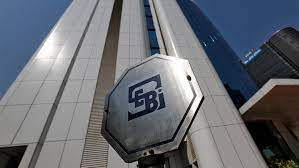After the Lok Sabha elections, reform momentum will increase; higher costs won’t have an impact on the deficit, according to S&P
According to S&P Global Ratings Director Andrew Wood on Wednesday, the pace of reform will likely take up until after the Lok Sabha elections in 2019 and that a little increase in spending during an election year won’t have a negative effect on India’s goal for its budget deficit.
“We anticipate that significant improvements in the nation will likely be improbable up to the election cycle and until the conclusion of the 2024 parliamentary elections. The impetus for change may then ramp up, especially if the next administration has a very strong mandate, according to Wood.
S&P predicts that both the federal government will reach its aim for a somewhat smaller fiscal deficit and that state governments would progressively consolidate their finances over time.
“Even if we see a little bit of a boost to the expenditure in an election year, in the run-up to the elections, revenue growth also remains healthy in India and that has been supporting the gradual pace of fiscal consolidation,” Wood added.
He was responding to a query on how the increased spending during an election year would affect the budget deficit.
The fiscal deficit, or the gap between government spending and income, decreased from 6.7% of GDP in the 2021–2022 fiscal year to 6.4% of GDP in 2022–2023.
The planned deficit for the current fiscal is 5.9% of GDP.
According to the plan for fiscal consolidation, the government aims to reduce the budget deficit to less than 4.5% of GDP by 2025–2026.
Five Indian states—Rajasthan, Chhattisgarh, Madhya Pradesh, Telangana, and Mizoram—have assembly elections coming up, while the Lok Sabha elections are set for the next year.
According to Wood, S&P has assumed that India’s general government deficit would typically range between 7 and 9% of GDP, with state-level deficit accounting for a significant portion of that figure.
India’s sovereign rating was confirmed by S&P Global Ratings at “BBB-” in May with a stable outlook, noting that the country’s strengths include its rapidly expanding economy and solid external balance sheet. The lowest investment grade rating is “BBB-.”
It said that despite a general global downturn, the Indian economy is projected to see real GDP growth of roughly 6% in 2023, which compares well with counterparts in other developing markets. Over the next three to four years, strong growth prospects will be supported by consumer and investment momentum, according to S&P.







